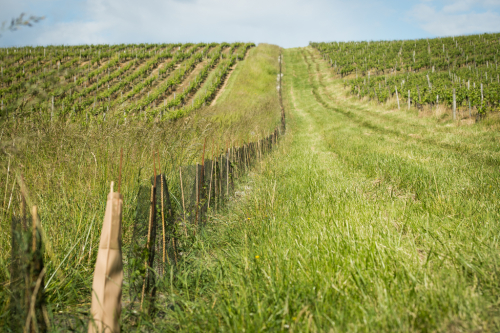Buzet wine promotes biodiversity: hedges in the vineyard
08/04/2013
Domaine de Gueyze, 80ha, is the largest vineyard of the cooperative Les Vignerons de Buzet. It is surrounded by 1.5km of hedges. These hedges have been entirely replanted. The first hedges around the Gueyze estate were planted in 2013. It was then a first step in agro-forestry for this winery committed since 2005 to sustainable development.
This long-term action, which began 7 years ago, aims to enrich biodiversity of the vineyard. The cooperative Les Vignerons de Buzet works in cooperation with an association for the protection of Nature, the Sepanlog, in order to plant local species adapted to the environment. The Departmental Council has also supported this ecological project within a cooperative and innovative vineyard.
These hedges made up of local plant species therefore border the AOC Buzet vines. They are arranged in such a way as to create corridors between two forest edges. These hedges are an easy path for small fauna, better than the rows of vines. They are also a sufficiently hidden place for birds to nest.
Hedges: an ancient practice used in agro-forestry
The purpose of the old hedges, which were made up of hazel, rowan sucker and hawthorn bushes, was to divide up parcels of land. With the invention of wire fencing in the early 20th century, then land consolidation in the 1960s, the old hedges were considered obsolete and inconvenient for manoeuvring machines. It was only later – too late! – that their fantastic ecological usefulness became apparent: hedges are an essential factor in the conservation of biodiversity. They were home to birds’ nests and all manner of game. Then it was realised that the damage was even worse than that, because hedges are an irreplaceable breeding ground for insects.
An abundance and variety of insects near to vineyards formed a natural regulator, preventing parasites from proliferating in the vines. Replanting hedges is thus a way for winegrowers to cut down on the use of pesticides.
